Atomistic Simulation of Martensitic Phase Transformations
Participants
Marcel Arndt, Michael Griebel
Description
We study structural phase transformations of crystalline solids by means of
Molecular Dynamics (MD). In this approach, the specimen is modeled on the
atomistic length scale by a system of interacting particles. The interaction is
described by an interaction potential, which determines the specific material
properties. The time evolution is then governed by Newton's second law. We use
the different ensembles NVE, NVT and NPT to prescribe the total energy, the
pressure and the temperature, respectively.
Martensitic phase transformations can already be simulated with the
Lennard-Jones potential. For the realistic description of a material, more
complicated potentials are necessary. We use the Embedded Atom Method (EAM),
which provides such a potential. This potential reproduces the physical
properties of metallic alloys to a large extent and thus allows us to simulate
phase transformations in shape memory alloys.
Examples
As an exampe, we show the temperature driven phase transformation in a FeNi
nanoparticle. The nanoparticle consists of Iron (80%, shown in green) and Nickel
atoms (20%, shown in blue). It is heated from 100K to 800K. Here are snapshots
at 100K, 480K and 530K.
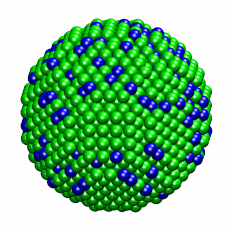
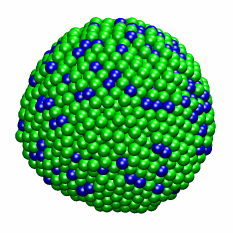
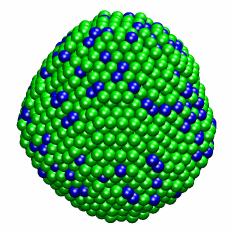
The crosssections of the nanoparticle reveal the lattice structure. The
following snapshots (again for 100K, 480K and 530K) show that the nanoparticle
undergoes a phase transformation from the martensite bcc (body centered cubic)
lattice to a mixed fcc (face centered cubic) and hcp (hexagonal close-packed)
lattice in the austenite phase.
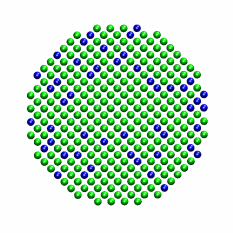
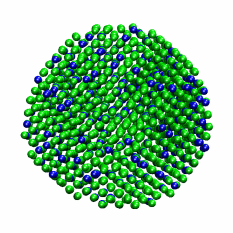
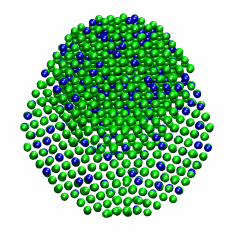
The whole transformation process is shown in the
movie.
In addition, the radial distribution density is plotted on the right
side. Furthermore, the potential and the kinetic energy are plotted.
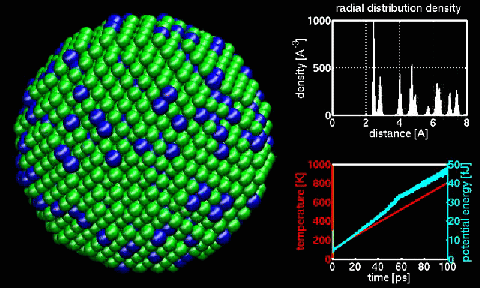
References
| [1] |
M. Arndt, M. Griebel.
Derivation of higher order gradient continuum models from atomistic models for crystalline solids.
Multiscale Model. Sim. 4(2):531-562, 2005.
|
| [2] |
M. Arndt. Upscaling from Atomistic Models to Higher Order Gradient Continuum Models
for Crystalline Solids. Dissertation, Institute for Numerical Simulation,
University of Bonn, 2004.
|
Related Projects






